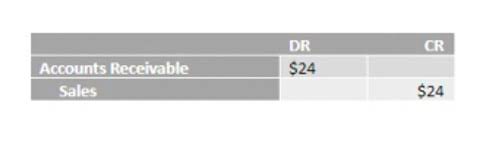
Mixed costs contain two parts – a fixed cost component and a variable cost component. The proportion of each component in the total cost may vary depending on production volume. Mixed retained earnings costs, also known as semi-variable costs, are business expenses that have both fixed and variable components. In simpler terms, it’s a cost that fluctuates according to the amount of production and cannot be eradicated like a fixed expense.
- It is important for Bert to know what is fixed and what is variable so that he can control his costs as much as possible.
- For example, businesses with a high proportion of fixed costs may need to maintain a high level of activity to achieve economies of scale and reduce average costs.
- Under this method, we calculate total sales and total costs at the highest level of production.
- The variable cost per unit during the same period comes to $ 10 per unit, and the number of units produced is 50,000.
Regression Analysis
- It is important to remember that period costs are treated as expenses in the period in which they occur.
- In addition to this, the company also incurs a cost for every gigabyte of data used by its customers.
- Below is a break down of subject weightings in the FMVA® financial analyst program.
- Embracing a proactive approach to cost management, through energy conservation initiatives or negotiating favorable utility contracts, can further optimize financial performance.
- Mixed costs (also called semi-variable costs) are costs that have both fixed and variable components.
- The costing variant contains information on how a cost estimate calculates the standard price.
- Businesses with a cost advantage, often achieved through efficient operations and lower costs, can compete on price and attract customers seeking value.
Whether you’re a startup, a large corporation, or a nonprofit, understanding and managing mixed costs is essential for sustainable growth. In addition to this, the company also incurs a cost for every gigabyte of data used by its customers. what is a mixed cost This is the variable cost component as it changes depending on the data usage by customers. Understanding the nature of mixed costs can help a company plan its operations and make decisions about pricing, budgeting, and investing. Under this method, we calculate total sales and total costs at the highest level of production.

Mark Standard Cost Estimate
Accurate reporting mechanisms enable management to evaluate cost trends, identify areas of improvement, and make well-informed decisions. In today’s dynamic business environment, where cost plays a pivotal role in competitiveness, integrating mixed cost understanding into decision-making processes is imperative for sustainable growth. Implementing control measures based on this understanding allows companies to monitor and regulate the impact of mixed costs, contributing to efficient cost management and overall financial stability. Accurate financial prediction heavily relies on the understanding and appropriate allocation of mixed costs, as they can significantly influence the overall profitability and sustainability of a business.

The Financial Modeling Certification
- Thorough analysis of the components of rent expenses, such as base rent, property taxes, maintenance fees, and utilities, is crucial for understanding their mixed cost nature.
- A mixed cost is a financial term that refers to a cost composed of a mixture of fixed and variable components.
- This means that the configuration in the sales order describes the variant.
- Understanding the allocation of fixed costs is crucial for businesses to make informed decisions about resource allocation and investment strategies.
- Because it uses only two data values in its calculation, variations in costs are not captured in the estimate.
Unlike fixed costs that remain fixed in total but change on a per-unit basis, variable costs remain the same per unit, but change in total relative to the level of activity in the business. Revisiting Tony’s T-Shirts, Figure 6.26 shows how the variable cost of ink behaves as the level of activity changes. In conclusion, fixed costs, variable costs, and mixed costs are all important concepts to understand when it comes to cost behavior. Knowing the difference between these cost types will help you make informed business decisions Accounting for Marketing Agencies and manage your finances more effectively. However, in addition to this black-and-white classification of costs, there is also a third type, which is referred to as mixed costs. During the normal operation cycle, there are several costs that businesses normally incur.

What are the methods for separating mixed costs into fixed and variable?

Examples of other fixed costs are insurance, depreciation, and property taxes. Every month, you pay a set amount for your plan—that’s the fixed cost. Next, we will look at how we can estimate the fixed and variable portions of a mixed cost for accounting analysis.